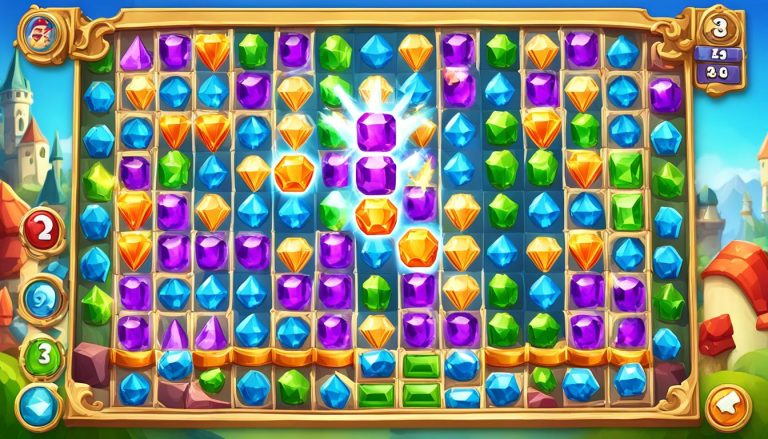Welcome to the world of Human Bingo, the fun and engaging icebreaker game that will liven up any party, classroom, or team-building event. In this article, we will guide you through a step-by-step process of how to play Human Bingo and provide you with all the necessary instructions and rules to ensure a smooth and enjoyable experience.
How to Play Human Bingo?
Human Bingo is a game that promotes social interaction and helps players get to know each other better. The game involves distributing printable Human Bingo cards with a 5×5 square grid, where each box contains interesting characteristics or facts. Players will interview each other to find individuals who match the characteristics on their card and have them sign or write their name in the corresponding box.
The first player to fill a line or complete their entire card becomes the winner. It’s a fantastic way to break the ice and spark conversations among participants. Whether you’re hosting a party, teaching a class, or organizing a team-building event, Human Bingo is an ideal icebreaker activity that will create a fun and inclusive atmosphere.
Creating the Bingo Cards
When organizing a Human Bingo game, the first step is to create the bingo cards. These cards will serve as the foundation for the entire game and contain the characteristics, personalities, and life facts that players will be searching for.
Using a standard 5×5 square grid format, fill in each box with interesting and diverse attributes that reflect the players’ unique qualities. The goal is to create a varied and engaging set of characteristics that will prompt conversations and interactions between players.
Here are some ideas to fill the boxes:
- Owning a pet
- Commuting to work or school
- Trying different cuisines
- Winning something
- Traveling to a specific destination
- Speaking multiple languages
- Playing a musical instrument
- Having a favorite book or movie
Feel free to customize the questions based on the theme of the gathering. For example, if it’s a team-building event, you can include characteristics related to work skills or hobbies. If it’s a social event, focus on personal interests and experiences.
Make sure that you have enough cards for each player and provide pens or pencils for them to mark their cards. This ensures that everyone can actively participate in the game and enjoy the experience.

Customizing the Bingo Card
One of the advantages of Human Bingo is its flexibility, allowing you to customize the game based on the participants’ preferences or the event’s theme. By tailoring the game to specific groups, you can create a more personalized and engaging experience.
Consider the age group, interests, and goals of the participants when designing the bingo cards. For example, if it’s a game for children, you can include characteristics related to their favorite animals, hobbies, or cartoon characters. On the other hand, if it’s an adult event, incorporate characteristics that encourage networking, such as professional achievements or travel experiences.
By incorporating customization into the game, you can maximize the fun and create an unforgettable experience for everyone involved.
Distributing the Cards and Explaining the Rules
Once the cards are prepared, distribute them to each player as they arrive at the gathering. Make sure everyone has a pen or pencil to start marking their cards. As the game begins, explain the rules to the players. Let them know that they need to interview each other and ask questions to find someone who matches the characteristics on their card. Emphasize the importance of socializing and encourage players to engage in conversations to get to know each other better.
Playing human bingo is a fun and interactive activity that requires active participation from all players. By distributing the cards and explaining the rules, you set the stage for an enjoyable and engaging game. Each player will have a unique card with specific characteristics or facts written on it.
Before the game starts, ensure that each player has their own copy of the bingo card. This will allow them to refer to their specific characteristics and keep track of the people they meet during the game. Providing pens or pencils is essential so that participants can easily mark their cards as they go along.
Explaining the rules is crucial to ensure everyone understands how to play. You can start by highlighting the objective of the game, which is to find individuals who match the characteristics on their card. Encourage players to interact with each other, ask questions, and have conversations to uncover these similarities.
It is essential to emphasize the importance of socializing during the game. Encourage players to engage in meaningful conversations to get to know each other better. This not only enhances the gameplay but also promotes relationship-building and creates a friendly and inclusive atmosphere.
Remember to provide clarity on how players should mark their cards as they find matching individuals. Whether they sign their names or write down the names of the people they meet, make sure everyone is clear on the method of marking their progress.

Playing and Declaring a Winner
Now that the game has begun, it’s time for players to start moving around the group and interacting with each other. They should ask questions and seek out individuals who match the characteristics or facts on their Human Bingo cards.
If you’re playing virtually, make use of video conferencing platforms to facilitate the interaction and interview process. This way, everyone can participate and engage with each other, regardless of their physical location.
The first player to fill a line or complete their entire card can enthusiastically call out “Bingo!” to declare themselves as the winner. Alternatively, you can declare a winner when a row, whether it’s across, up, down, or diagonal, has been successfully completed.
To add an extra level of excitement to the game, consider providing a small prize or recognition to the winner. This will heighten the competitive spirit and make the game even more enjoyable.
| Playing and Declaring a Winner | |
|---|---|
| Steps | |
| 1. Move around the group and interact with other players | |
| 2. Ask questions and find individuals who match the characteristics on your card | |
| 3. If playing virtually, use video conferencing platforms to facilitate interaction | |
| 4. The first player to fill a line or complete their entire card calls out “Bingo!” | |
| 5. Alternatively, declare a winner when a row has been completed | |
| 6. Consider rewarding the winner with a small prize or recognition |
Playing Human Bingo and declaring a winner is an exciting moment that brings the game to a close. It’s a great opportunity to celebrate the winning player and the connections made during the game.
Conclusion
Human Bingo is an interactive and engaging icebreaker game that is perfect for group gatherings. Whether you’re hosting a party, conducting a team-building exercise, or facilitating a classroom activity, this game promotes social interaction and helps participants get to know each other better. By encouraging conversation and creating a fun atmosphere, Human Bingo builds connections and relationships among players.
One of the great aspects of Human Bingo is its versatility. You can customize the characteristics and facts in the bingo cards to suit different themes and age groups. This makes it an ideal choice for various settings and occasions. From breaking the ice at a social event to fostering teamwork in a professional setting, Human Bingo is a fantastic tool for promoting communication and camaraderie.
If you’re looking for an enjoyable and effective way to enhance social interaction, Human Bingo is the perfect game for you. Its simplicity and adaptability make it an accessible choice for anyone seeking a memorable and interactive activity. So, why not incorporate Human Bingo into your next gathering and witness the positive impact it can have on your group?






